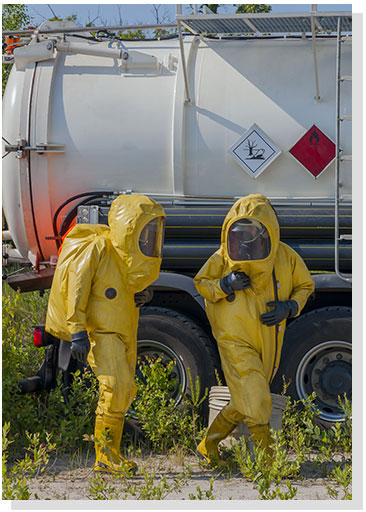Not every broker understands your business, we do!
We see the difference between you and traditional contractors and understand the intricacies of what your work.
We design insurance programs that include Pollution & Professional Liability with insurance underwriters who stick with you during the job and respond if there's a claim.
Our specialty program for the Environmental Remediation industry can be tailored to include:
Your insurance should be something you can depend on, not something that leaves you on your own hoping that you’re covered. You depend on your insurance coverage, so work with a pro. Have questions?
Contact us at (800) 530-4448 or reach out in the form below.

Our Blog
News Articles
Selecting an Insurer: Admitted / Non-Admitted & Financial Strength
Some insurance buyers express concern over whether a carrier is…
What Information Do You Need to Collect for a Work Comp Claim?
Monday morning you get a call from one of your…
Not every broker understands your business, we do!
We see the difference between you and traditional contractors and understand the intricacies of what your work.
We design insurance programs that include Pollution & Professional Liability with insurance underwriters who stick with you during the job and respond if there's a claim.
Our specialty program for the Environmental Remediation industry can be tailored to include:
Your insurance should be something you can depend on, not something that leaves you on your own hoping that you’re covered. You depend on your insurance coverage, so work with a pro. Have questions? Contact us at (800) 530-4448 or reach out in the form below.
Our Blog
News Articles
Selecting an Insurer: Admitted / Non-Admitted & Financial Strength
Some insurance buyers express concern over whether a carrier is…
What Information Do You Need to Collect for a Work Comp Claim?
Monday morning you get a call from one of your…
Testimonials
What Our Customers Have to Say About Us

Eclipse Marketing & Insurance Services has not only provided us with the best available rates with top rated insurance companies for all aspects of our business needs, their personal service has also been the best we have ever had. Simply stated, Eclipse has earned our loyalty and repeat business.
-Kyle Smith, Your Energy Source
LEARN MORE
We're happy to answer any questions that you have.
No pressure. Email or phone, it’s your choice.
What Eclipse Offers
Our Other Focus Areas

Environmental Construction
We see the difference between you and traditional contractors. We understand the intricacies of what you work with and see day after day. We get it, we know.

Adventure Sports
Not many insurance brokers understands what a company in the Extreme Sports industry does, let alone how to insure them for all their risks.

Construction
Not every broker understands what you need. We Do Understand. If you don't stay in business, we don’t stay in business.

Electronic Security / Alarm
Low voltage has been the core of our business since 1994. Very few brokers have been at it that long even less actually know how to insure a dealer much less a central station.

Additional Industries
Looking for insurance specializing in your industry?





